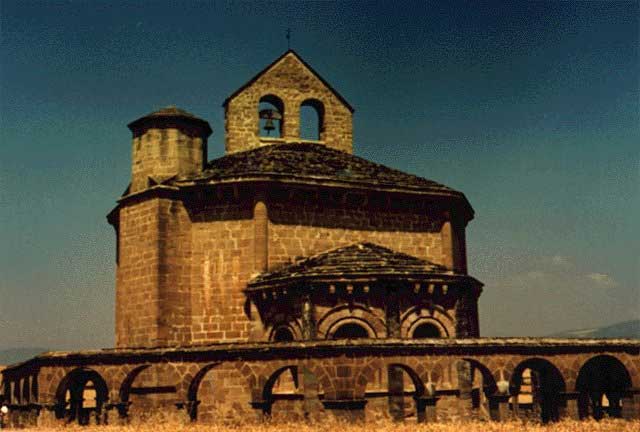
Maître Jacques

The path of stars and hermitages
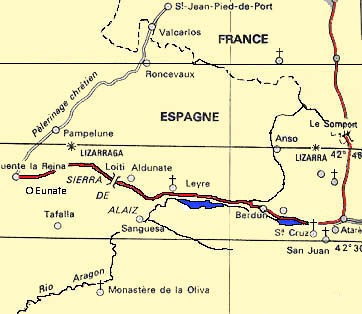
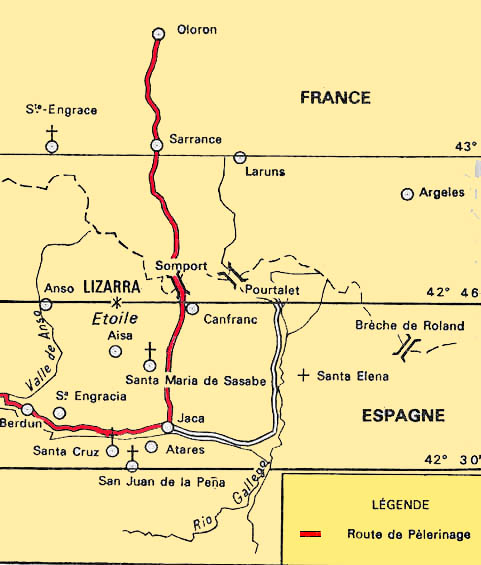
Since time immemorial, the “Landsend” at the farthest-west coast of Spain has been a gathering place for initiates and of central importance in the history of the Atlantic peoples. After the demise of the Roman Empire and the relative calm under Charlemagne which succeeded three centuries of invasions and chaos, encouraging pilgrimage to this site in Galice was a way of reviving a civilization shattered by conflicts. In the first half of the 9th century the tomb of Saint Jacques was (miraculously?, conveniently?) “discovered” at La Noïa. It became a pilgrimage destination for initiates, who followed a path which wound its rough way through Oloron, Sarrance, Jaca, etc.
By the year 900, this “university” way was increasingly popular. To direct strictly Christian travellers on an easier, less “esoteric” itinerary, the church developed way-stations leading them through Pampelune. After that, the craftsmen’s path never mixed with that of the pilgrims. The former went through the region of Jaca and its hermitages (in red); the latter travels (still today) along a network of hostelries (“pelerinage chretien” on the map). The motives behind the two journeys were essentially different as well. Travellers who went by Roncevaux and the “camino francès” were motivated by religious concerns: expiation, penitence, requests of all types, vows…
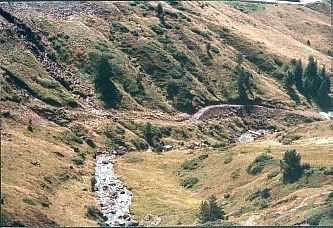
The Somport Pass in the Pyrenees
The craftsmen’s university was found on the way through the Somport Pass, and the apprentice stopped to learn. The path led from one old master to the next, from civil to religious hermitage, following the antique path of stars, the one closest to the wouïvre (energetic forces circulating under the earth), finally arriving at La Noïa (40 kilometers from Compostelle) in the Finistère (Landsend) of Galice.
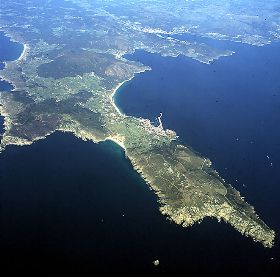
Finistère, in Galice (Spain)
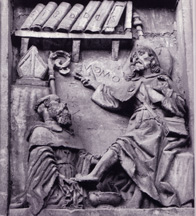
Benedictine monk washing a pilgrim’s feet
Traditionally, the Christian path (on foot only) begins as you pass out your front door, goes through Compostelle and finishes once you close the front door behind you on your return. There are four gathering points: Paris, Vézelay, Le Puy and Saint-Gilles (Arles). They converge at Ostabat in northern Basque country and together form the “camino francès”, le pilgrim path.
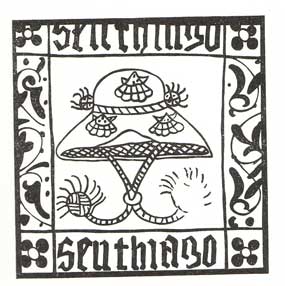
Pilgrim’s hat
By the time they have made their way through the voyage of apprenticeship, the craftsmen are ready
to get back into the world of work. Their road finally connects with that of the Christian pilgrims.
Together they cross the bridge at Puente la Reina
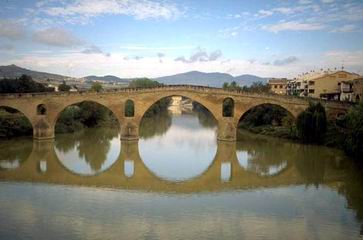
The craftsmen only went once to Noia, but often returned to the Pyrenees to see their former masters,
learn new methods, acquire greater understanding. From these Pyreneen builders we have inherited the “wisigoth” or “mozarabe” style, exemplified by the marvellous circular Eunate!
